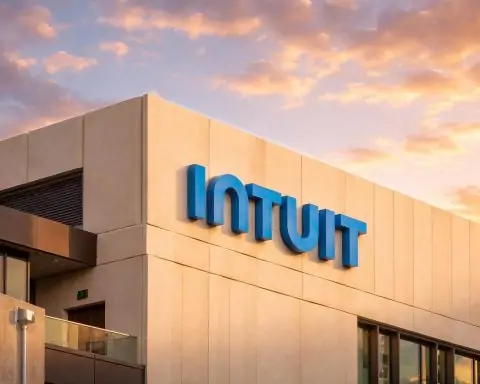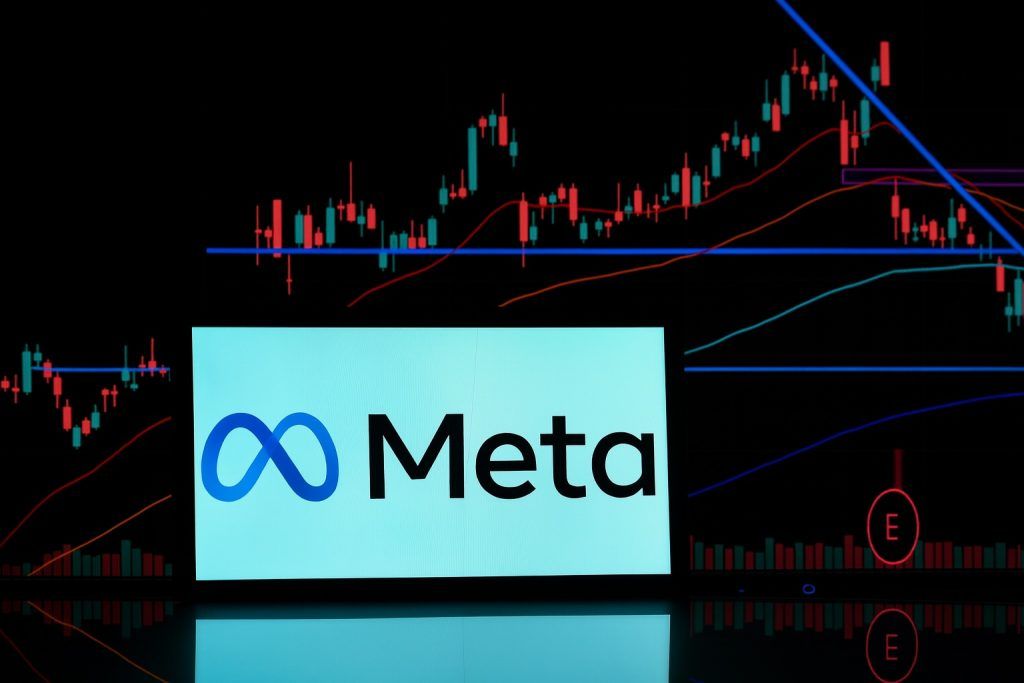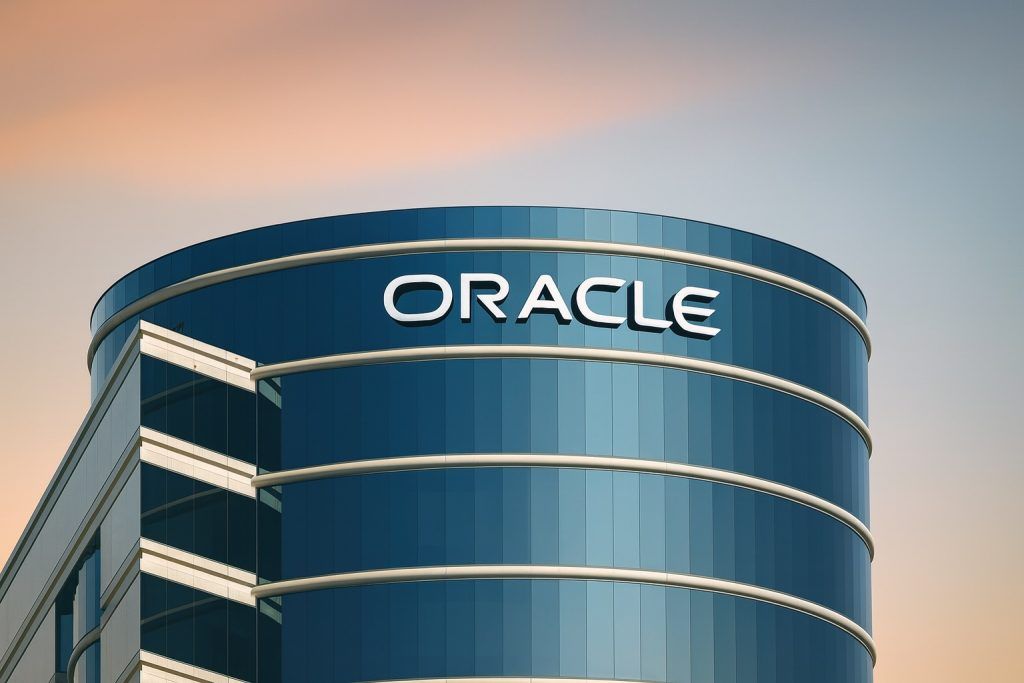- Price & Gain: Microsoft (NASDAQ: MSFT) shares recently traded around $520–522 (October 23, 2025) [1], up roughly 20–25% year-to-date [2]. The company’s market capitalization is about $3.8 trillion [3].
- Strong Growth Drivers: The rally is powered by cloud and AI momentum. In FY2025, Microsoft delivered $281.7 billion revenue (+15%) and $128.5 billion operating income (+17%) [4]. Azure cloud revenue exceeded $75 billion (up 34% YoY) [5] [6], and the recent quarter saw 76.4 billion in revenue (+18%) and $27.2 billion net income (+24%) [7].
- Recent News: In mid-October, Microsoft unveiled new AI-powered Surface Copilot+ PCs (first 5G Surface Laptop) at GITEX [8] and announced local data centers to host Microsoft 365 Copilot for UAE customers [9]. The company also struck high-profile partnerships – for example, a new alliance with the London Stock Exchange Group to feed Copilot AI with market data [10].
- Regulatory & Legal: Europe’s antitrust enforcer accepted Microsoft’s offer to unbundle Teams from Office (with discounts) to avoid a fine [11] [12]. In the U.S., a new class-action alleges Microsoft’s exclusive deal with ChatGPT-maker OpenAI inflated AI prices [13]. Microsoft has defended the OpenAI partnership, saying it “promotes competition” [14].
- Upcoming Catalysts: Microsoft will report fiscal Q1 FY2026 results (quarter ended Sept. 30) on Oct. 29, 2025 [15]. Analysts will be watching Azure growth, Copilot adoption, and heavy AI spending. CFO Amy Hood signaled that capex is jumping to “record” levels (~$30 billion) for the coming quarter to build AI data centers [16].
- Analyst Outlook: Wall Street is overwhelmingly bullish. Consensus 12-month price targets sit around $620–630 per share [17]. For example, UBS and Morgan Stanley have $625–650 targets, citing fast Azure growth. According to MarketBeat data, 32 of 34 analysts rate MSFT a “Buy” with an average target near $618 [18].
- Peers: Microsoft’s cloud growth is outpacing peers. Azure revenue grew 39% in the latest quarter (Q4 FY2025) [19], versus ~17% for Amazon AWS and ~32% for Google Cloud [20]. By comparison, Apple (AAPL) remains focused on hardware-led AI features and is valued richly [21], Alphabet (GOOGL) on ads/cloud, and Amazon (AMZN) on retail plus AWS profit [22].
Stock Performance and Market Snapshot
MSFT stock has hit fresh highs amid the AI and cloud craze. On Oct. 23, 2025 it was trading around $521–523 [23], up over 0.5% on the day. Year-to-date, Microsoft is up roughly 25% [24] (compare to mid-single-digit gains for many peers). Its market cap is now about $3.8 trillion [25], making it the second-largest U.S. company. Analysts note the stock’s price-to-earnings (forward) is near 28× [26], which is high but justified by double-digit earnings growth forecasts and a growing dividend.
MSFT’s recent price strength reflects broad fundamentals. A TS2.tech analysis observes “Microsoft is firing on multiple cylinders” with broad-based gains in cloud, productivity, and even gaming [27]. Notably, Azure has been the “growth engine” – up 39% in the June quarter [28]. That far outpaced rivals; AWS grew only ~17% and Google Cloud ~32% in the same period [29]. Microsoft’s diversified portfolio (Office 365, Dynamics 365, LinkedIn, Xbox, etc.) also contributed: for example, Windows OEM revenue and gaming have shown strong year-over-year gains as enterprises refresh PCs.
Recent Developments and AI Initiatives
Microsoft has been at the center of several big news headlines in the past weeks. On Oct. 15 (at Dubai’s GITEX 2025), it unveiled the Surface Copilot+ line of AI PCs – including its first 5G-enabled Surface Laptop [30]. These devices are designed to deliver on-device AI through Copilot+ features, as businesses transition toward AI-capable hardware ahead of Windows 10’s support end. (Windows 10 support ended Oct. 14, 2025 [31], prompting a wave of upgrades to new Windows 11/AI-optimized PCs.)
The company is also expanding its AI footprint globally. On Oct. 14, Microsoft announced it will enable in-country data processing for Microsoft 365 Copilot in the UAE, hosting the service in local Dubai and Abu Dhabi data centers [32]. This strategic investment allows qualifying UAE organizations to use Copilot with data kept within national borders for compliance, accelerating AI adoption in that market [33].
Microsoft continues to ink high-profile partnerships that bolster its cloud business. For example, just last week it expanded an alliance with the London Stock Exchange Group (LSEG), linking Copilot AI to LSEG’s vast financial data (33+ petabytes) to help bankers and analysts with real-time market insights [34]. It also announced a deal with payment firm Checkout.com on Oct. 7 to embed Azure AI tools in fintech platforms [35]. These moves highlight how Microsoft is weaving AI into multiple industries.
On the corporate side, Microsoft has signaled its “all-in” AI focus by reshuffling leadership. Effective Oct. 1, 2025, longtime executive Judson Althoff was promoted to head Microsoft’s commercial business (roughly 75% of revenue), freeing CEO Satya Nadella to concentrate on AI infrastructure and innovation [36] [37]. Nadella told employees this change allows engineering teams to “tighten the feedback loop” between customers and product development as Microsoft races ahead in AI [38]. As one strategist puts it, “Microsoft is becoming more of a cloud infrastructure business and a leader in enterprise AI,” which underscores why the stock has been rallying [39].
Financial Performance and Earnings
Microsoft’s financial results have been robust. In its FY2025 fourth quarter (ended June 30), the company reported $76.4 billion revenue (+18% YoY) and $27.2 billion net income (+24%) [40]. Operating income was $34.3 billion (+23%) [41]. Productivity & Business Processes (Office, Dynamics, LinkedIn) and Intelligent Cloud (Azure, server products) saw strong double-digit growth, while “More Personal Computing” (Windows OEM, Xbox, Surface) also grew due to higher gaming content and PC sales. CEO Nadella highlighted that “Azure surpassed $75 billion in revenue, up 34 percent” for the fiscal year (FY25) [42]. CFO Amy Hood noted that Microsoft Cloud (Azure + SaaS) revenue reached $46.7 billion in FY2025 Q4, up 27% [43].
For the full fiscal year 2025, Microsoft posted $281.7 billion in revenue (up 15%) and $128.5 billion operating income (up 17%) [44]. The growth was led by cloud and AI: Azure’s revenue rose 34% year-over-year, and cloud gross margins remained healthy despite heavy AI investment. Microsoft’s consumer and enterprise services also expanded – for example, Office 365 commercial cloud grew mid-teens, and Dynamics 365 continued high-teens growth, reflecting broad demand for AI-enabled offerings [45] [46].
The upcoming earnings report (quarter ending Sept 30, to be released Oct. 29) is eagerly awaited. Analysts expect continued double-digit growth, especially in Azure and Copilot subscriptions. As one Motley Fool analysis notes, investors will “keep an eye on Copilot adoption” by large enterprises, since expanding Copilot licenses (e.g. Microsoft 365 add-ons) could signal future revenue boosts [47]. A Barclays test purchase of 100,000 Copilot licenses in Q4 suggests some confidence in strong enterprise uptake [48]. Wall Street will also scrutinize guidance, as rising capital expenditures (into AI data centers and servers) could pressure near-term margins [49].
Market and Analyst Reactions
Wall Street sentiment on Microsoft is overwhelmingly positive. Major banks have maintained “Buy” ratings with lofty targets. For instance, UBS kept a buy rating with a $650 target (Oct. 22) citing accelerating Azure growth, and Bank of America set a $640 target (Oct. 20) anticipating ~39% Azure growth and $77 billion in Q1 revenue [50]. Cantor Fitzgerald reiterated an “Overweight” stance, noting that the Windows 10 end-of-support and PC refresh cycle should drive new sales of Windows and security products [51].
According to TS2.tech, analysts generally see a ~$600+ upside: “Street still sees $600–$650 over 12 months (Morgan Stanley at $625; consensus ~$628)” [52]. In fact, consensus 12-month targets hover around the low-600s [53] [54]. Market-beating strategists have highlighted Microsoft as a “Top Pick” for its AI trajectory – Morgan Stanley raised MSFT to a $625 target, calling the cloud/AI growth “outstanding” [55]. A recent TS2.tech report notes that 32 of 34 analysts rate Microsoft a “Buy,” an almost unprecedented level of agreement for a $3+ trillion company [56]. Even traditionally cautious investors (like Buffett-style screens) now give MSFT high marks for predictable earnings and free cash flow [57].
Retail investors are also enthusiastic. Microsoft’s improved financial outlook and visibility into AI projects have spurred many to add shares. As one TS2.tech analyst puts it, Microsoft is seen as the “winner of the AI revolution,” and its broad product mix provides a buffer against any single risk [58] [59]. Some caution exists over the company’s high valuation, but most experts argue the multiples are justified by expected 15–20% annual earnings growth [60].
Future Outlook and Forecasts
The consensus view is that Microsoft will continue to benefit from secular trends in AI and cloud computing. Analysts expect Azure to remain the fastest-growing segment, driven by enterprises’ AI initiatives. The full monetization of Copilot (AI assistants in Office apps, Windows, Dynamics, etc.) is still ramping – if Copilot or custom AI agents become mass-adopted, it could unlock substantial new revenue streams. Microsoft itself has pointed to over 400 million eligible Office 365 seats for Copilot add-ons [61], suggesting enormous potential.
On the cost side, Microsoft has warned that AI infrastructure investments are heavy. CapEx is expected to set new records (Hood mentioned about $30 billion for Q1 alone [62]). But the company insists these outlays will yield higher efficiency and sales in the long run. In guidance, management may discuss ROI on cooling and server innovations (the company is investing in advanced cooling tech to support GPUs [63]). Most models factor in gradually improving margins as AI revenues scale.
In short, consensus 12-month targets imply ~15–20% upside from current levels [64]. Bull-case scenarios (faster Copilot adoption, strong corporate IT spending, favorable PC refresh cycle) could push targets into the $650–700 range [65]. On the flip side, risks include potential regulatory actions (e.g. any fallout from antitrust probes), or supply constraints (GPU shortages) [66]. Overall, the tilt is bullish: “Microsoft remains resilient” across its diverse businesses [67], and with every major tech rival also pushing AI, investors see room for further gains.
How Microsoft Compares to Big Tech Peers
In the wider tech landscape, Microsoft’s performance looks strong. For cloud infrastructure, Azure’s 39% growth handily beats Amazon’s AWS (~17%) and rivals Google Cloud (~32%) [68]. Alphabet (GOOGL) is also heavily investing in AI and cloud, but generally has a cheaper valuation and smaller cloud base [69]. Apple (AAPL) is taking a more device-centric approach to AI (new iPhones, Macs with on-device AI), and its stock has only modest gains (trading in the mid-$250s) compared to Microsoft’s tech rally [70]. Amazon (AMZN) balances its retail business with AWS; AWS is still very profitable but growing more slowly than Azure [71] [72].
Analysts often note that Microsoft strikes a unique balance: it is a leader in enterprise cloud and AI (high growth) but also throws off cash via its Windows/Office franchises and a rising dividend. This contrasts with, say, Nvidia’s pure-play AI chip focus (much higher growth and valuation) or Apple’s hardware-centric model. In peer comparisons, one TS2.tech overview describes Microsoft as having the “highest cloud growth” among tech giants, with a premium (but not extreme) stock multiple [73]. For income investors, Microsoft now also offers a growing dividend, which Apple and Amazon do not.
In summary, Microsoft’s stock has been among the year’s standout performers, powered by an AI-led earnings story. Its near-term outlook looks strong, with analysts’ price targets reflecting continued gains. As TS2.tech puts it, if the AI boom continues, Microsoft’s “combination of Azure growth, enterprise distribution, and data platform” puts it in a very favorable position, well worth its current valuation [74].
Sources: Authoritative earnings releases and financial reports [75] [76]; tech news sites (Microsoft Press Center) [77] [78]; financial analysis (TS2.tech, Motley Fool, InsiderMonkey) [79] [80] [81]; market data (Nasdaq, StockTitan) [82] [83]; Reuters coverage of regulatory/legal news [84] [85]. Each cited item links to a source page and line numbers.
References
1. www.stocktitan.net, 2. www.nasdaq.com, 3. www.stocktitan.net, 4. www.microsoft.com, 5. www.microsoft.com, 6. www.microsoft.com, 7. www.microsoft.com, 8. news.microsoft.com, 9. news.microsoft.com, 10. ts2.tech, 11. www.reuters.com, 12. www.reuters.com, 13. www.reuters.com, 14. www.reuters.com, 15. ts2.tech, 16. ts2.tech, 17. ts2.tech, 18. ts2.tech, 19. ts2.tech, 20. ts2.tech, 21. ts2.tech, 22. ts2.tech, 23. www.stocktitan.net, 24. www.nasdaq.com, 25. www.stocktitan.net, 26. ts2.tech, 27. ts2.tech, 28. ts2.tech, 29. ts2.tech, 30. news.microsoft.com, 31. ts2.tech, 32. news.microsoft.com, 33. news.microsoft.com, 34. ts2.tech, 35. ts2.tech, 36. ts2.tech, 37. ts2.tech, 38. ts2.tech, 39. ts2.tech, 40. www.microsoft.com, 41. www.microsoft.com, 42. www.microsoft.com, 43. www.microsoft.com, 44. www.microsoft.com, 45. www.microsoft.com, 46. www.microsoft.com, 47. www.nasdaq.com, 48. www.nasdaq.com, 49. ts2.tech, 50. www.insidermonkey.com, 51. www.insidermonkey.com, 52. ts2.tech, 53. ts2.tech, 54. ts2.tech, 55. ts2.tech, 56. ts2.tech, 57. ts2.tech, 58. ts2.tech, 59. ts2.tech, 60. ts2.tech, 61. www.nasdaq.com, 62. ts2.tech, 63. ts2.tech, 64. ts2.tech, 65. ts2.tech, 66. ts2.tech, 67. ts2.tech, 68. ts2.tech, 69. ts2.tech, 70. ts2.tech, 71. ts2.tech, 72. ts2.tech, 73. ts2.tech, 74. ts2.tech, 75. www.microsoft.com, 76. www.microsoft.com, 77. news.microsoft.com, 78. news.microsoft.com, 79. ts2.tech, 80. ts2.tech, 81. www.insidermonkey.com, 82. www.stocktitan.net, 83. www.nasdaq.com, 84. www.reuters.com, 85. www.reuters.com







